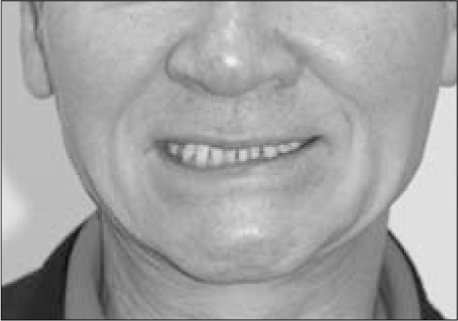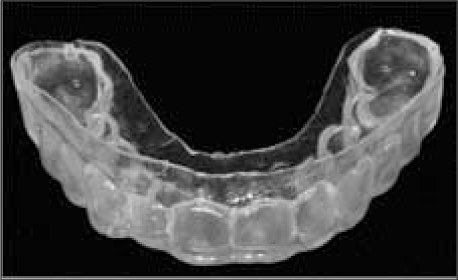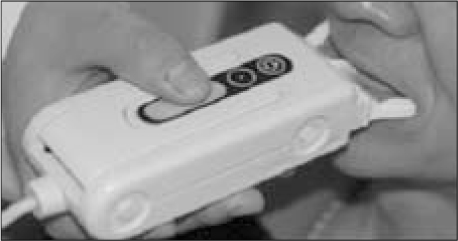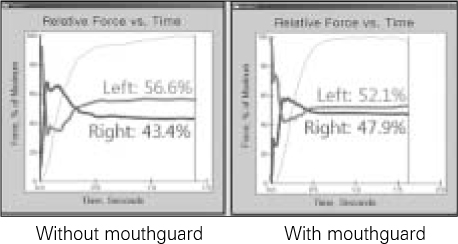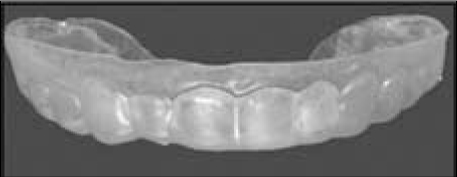J Korean Acad Conserv Dent.
2010 Jan;35(1):20-23. 10.5395/JKACD.2010.35.1.020.
Mouthguard for relief of repeated clenching stress to cervical restorations during exercises
- Affiliations
-
- 1Department of Conservative Dentistry, College of Dentistry, Gangneung-Wonju National University, Korea. drbozon@gwnu.ac.kr
- KMID: 2176273
- DOI: http://doi.org/10.5395/JKACD.2010.35.1.020
Abstract
- Mouthguards were used to protect boxers from lip lacerations and other soft tissue injuries in the late 19th century. Now they are used various parts of dental treatment, which are sports protective aid, bleaching tray, orthodontic retainer, implant insertion guide tray, splint and so on. Repeated dislodgement of Class V restoration due to habitual clenching stress should be restored with stress control. Mouthguard can be used as stress relief device. This case describes methods that can relieve occlusal force to teeth by using mouthguard. Satisfactory results can be obtained by using mouthguard for retention of repeated dislodgement Class V restorations. If patients suffered from repeated restorations of Class V due to clenching, mouthguard can be used additional device to relieve the occlusal stress in conservative dentistry.
Keyword
MeSH Terms
Figure
Reference
-
1. Grippo JO, Simring M, Schreiner S. Attrition, abrasion, corrosion and abfraction revisited: A new perspective on tooth surface lesions. J Am Dent Assoc. 2004. 135:1109–1118.2. Bernhardt O, Gesch D, Schwahn C, Mack F, Meyer G, John U, Kocher T. Epidemiological evaluation of the multifactorial aetiology of abfractions. J Oral Rehabil. 2006. 33:17–25.
Article3. Andreasen JO, Andreasen FM, Andersson L. Textbook and Color Atlas of Traumatic Injuries to the Teeth. 2007. 4th edition. 817–820.4. Yokoyama Y, Ishijima T, Hirai T. Involuntary clenching during elbow flexion exercise. J Jpn Soc Stomatognath Funct. 1996. 3:67–72.
Article5. Emura I, Maeda Y, Ohtani T, Okada M, Nokubi T, Okuno Y, Onoue Y, Maeada N, Yoshioka W, Tsutsumi S. Clinical application of T-Scan System. 2. Evaluation of soft mouthguards. Osaka Daigaku Shigaku Zasshi. 1990. 35:441–446.6. Takeda T, Ishigami K, Nakajima K, Naitoh K, Kurokawa K, Handa J, Shomura M, Regner CW. Are all mouthguards the same and safe to use? Part 2. The influence of anterior occlusion against a direct impact on maxillary incisors. Dent Traumatol. 2008. 24(3):360–365.
Article
- Full Text Links
- Actions
-
Cited
- CITED
-
- Close
- Share
- Similar articles
-
- Effect of a mouthguard on stress distribution in teeth, maxilla and mandible for maxilla and mandibular impact using finite element analysis
- Finite element analysis of the effects of a mouthguard on stress distribution of facial bone and skull under mandibular impacts
- Finite element analysis of the effects of mouthguard produced by combination of layers of different materials on teeth and jaw
- Mouthguard use in Korean Taekwondo athletes - awareness and attitude
- THREE-DIMENSIONAL FINITE ELEMENT STRESS ANALYSIS OF THE JAWS AT THE SIMULATED BILATERAL AND UNILATERAL CLENCHINGS

